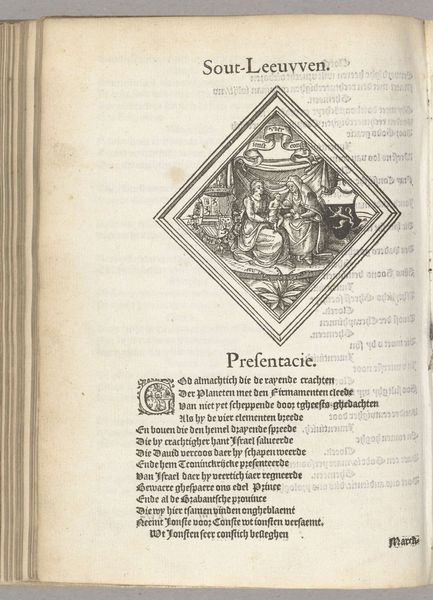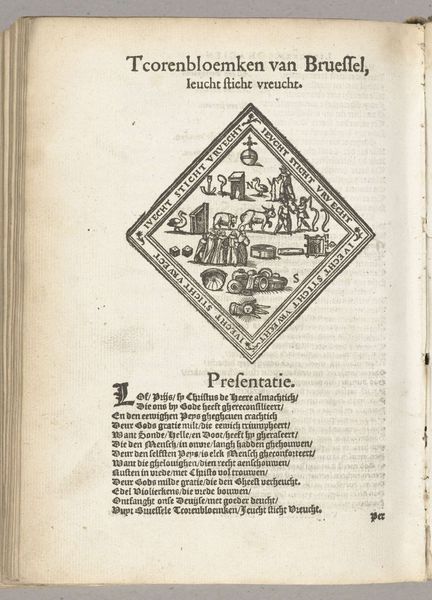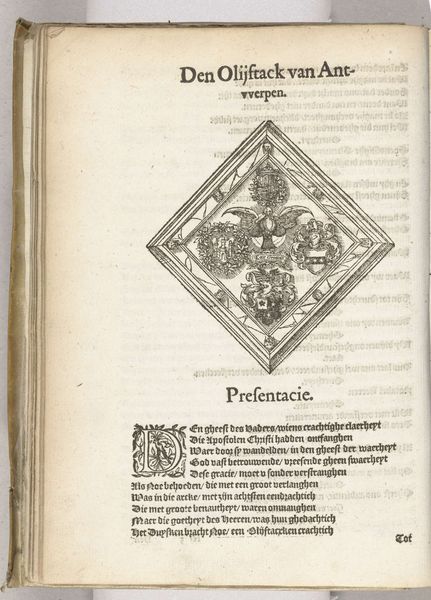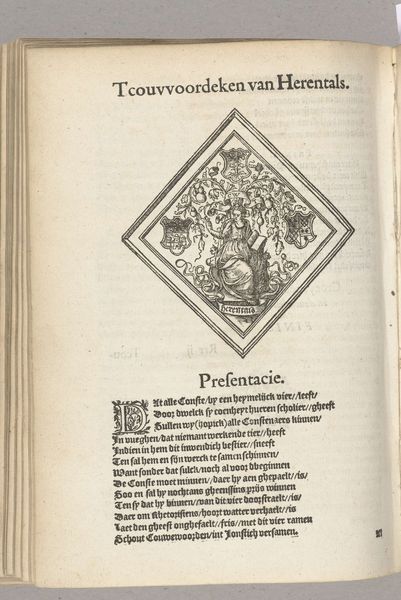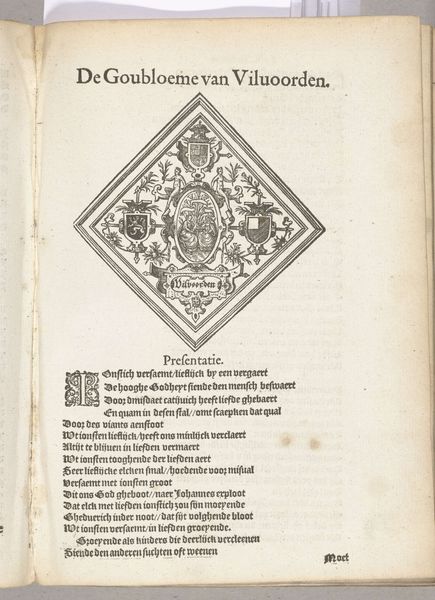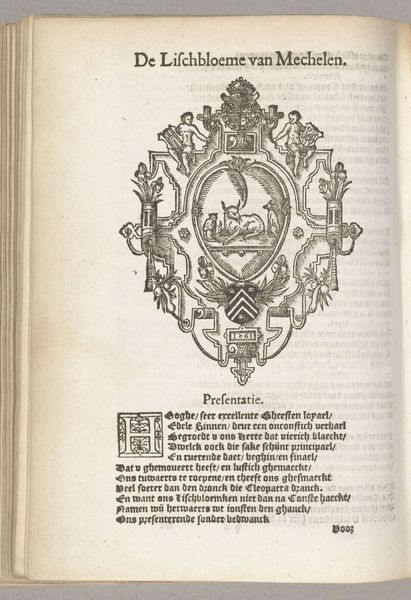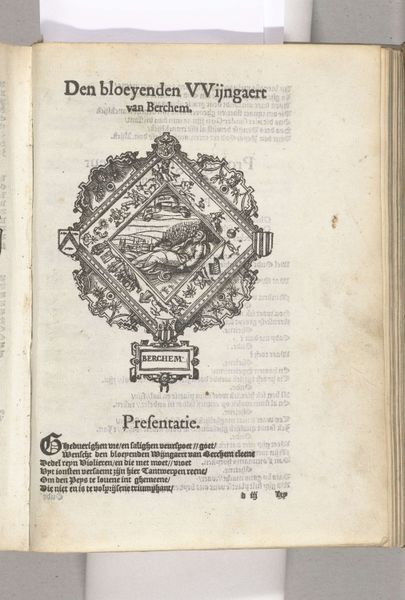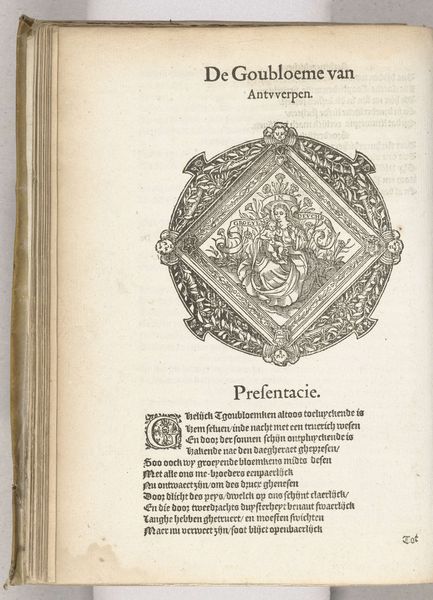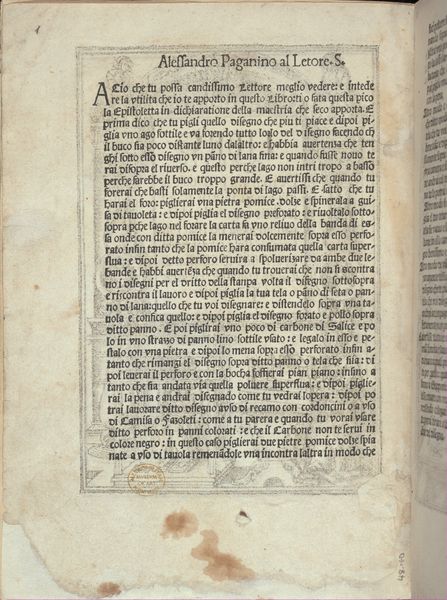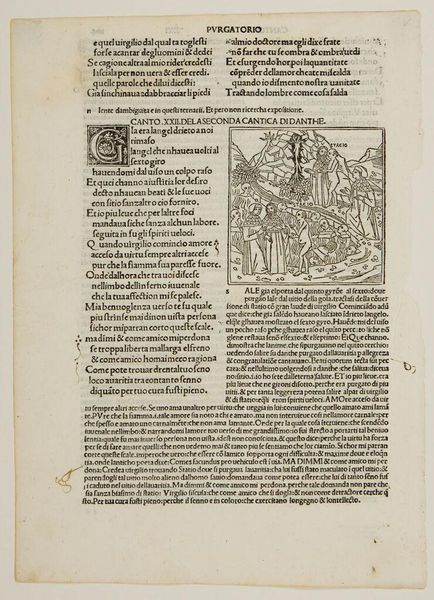
graphic-art, print, woodcut, engraving
#
graphic-art
# print
#
11_renaissance
#
woodcut
#
engraving
Dimensions: height 217 mm, width 153 mm
Copyright: Rijks Museum: Open Domain
This is a woodcut, "Blazoen van De Heibloem (Turnhout)," made in 1561 by an anonymous artist. The image is printed on paper, and the process of woodcutting is key to understanding its impact. The artist would have used specialized knives and gouges to carve away the areas that would remain white, leaving the lines and shapes in relief. Ink was then applied to the surface, and the image transferred to paper, producing a bold, graphic quality. The sharp contrasts and angular forms are a direct result of this labor-intensive method, which involves the careful removal of material. Woodcuts like this were crucial for mass communication in the 16th century, allowing for the relatively quick reproduction of images and texts. This particular example, with its symbolic imagery, speaks to the social context of the time. It reminds us that even seemingly simple images are the result of specific techniques, tools, and skilled traditions, reflecting broader social issues. By considering the materials, making, and context, we gain a deeper understanding of the artwork.
Comments
No comments
Be the first to comment and join the conversation on the ultimate creative platform.


